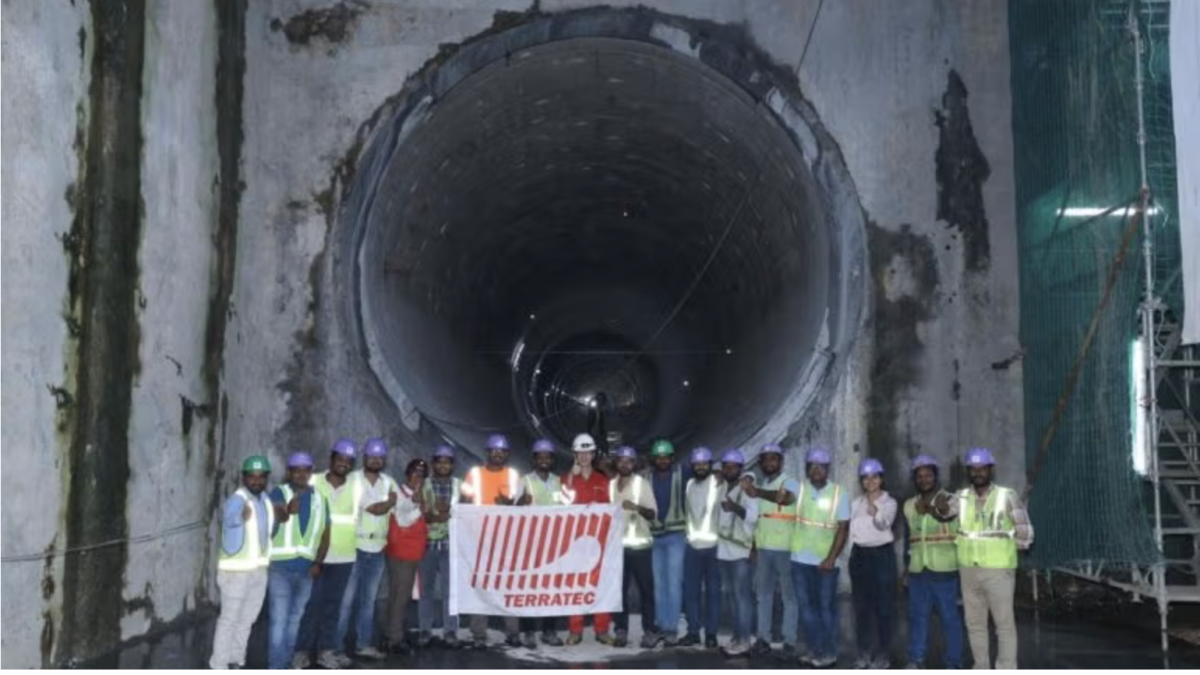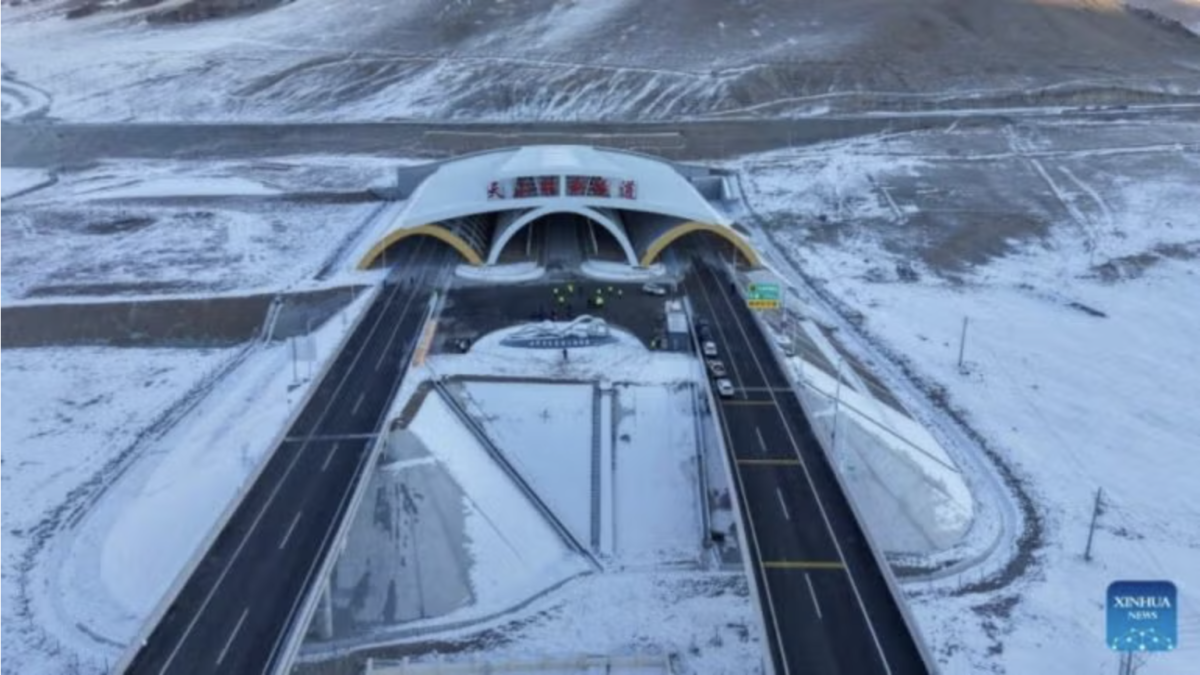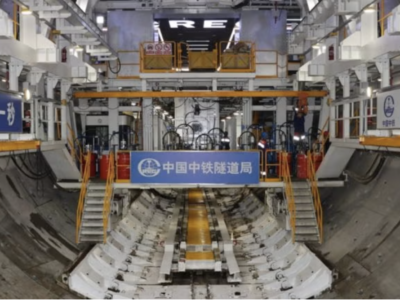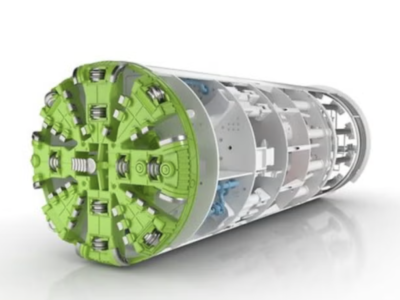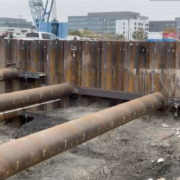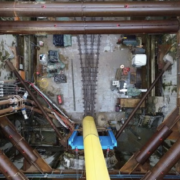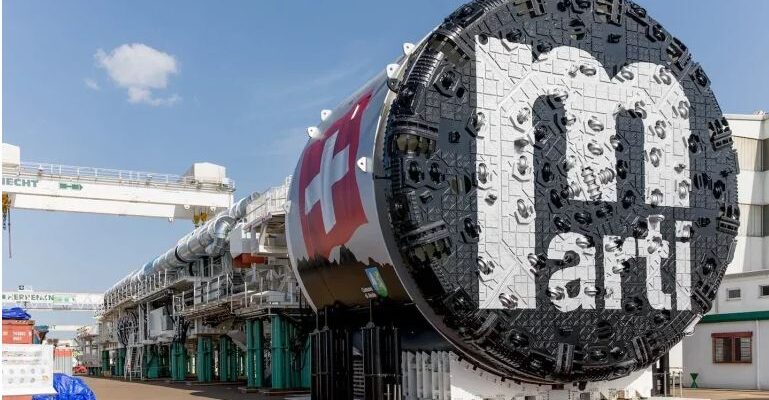
The 12.3m-diameter single shield Herrenknecht has passed its Factory Acceptance Test, whereas it is due to excavate the southern section of the new Gotthard road tunnel in Switzerland and has been designed to drive through the hard rock of the Alps, where granite, gneiss and slate are expected on the 7.75km-long southern tunnel section.
The TBM’s cutterhead is driven by 16 motors, which have a total output of 5,600kW.
On July 30 the FAT ceremony of this machine was done and currently it is going to be dismantled and the components transported to the construction site in Airolo (Ticino). The TBM will be reassembled at that location so Marti Tunnel AG can commence driving the main tunnel from March 2025.
Considering that a geological fault zone can be expected in both the north and south of the main tunnel as it has been indictaed in preliminary geological investigations and ecause of the rock characteristics, the two fault zone sections will be dug using conventional blasting before starting the mechanised main tunnel drive.
In order to reaching the fault zones in the mountain, access tunnels were excaveted through the rock using a TBM and for completing the excavation of the southern access tunnel a 7.4m-diameter Herrenknecht single shield TBM was used by Marti Tunnel AG in August last year. The machines for the main tunnel will later be pulled through the two fault zones that have already been excavated.
Additionally, for advancing the two northern construction lots of the main tunnel and access tunnel, Herrenknecht supplied a 7m-diameter gripper TBM and a 12.2m-diameter single shield TBM to a consortium of Implenia Schweiz AG and Frutiger AG. While April 2023 was the date of completing excavation of the northern access tunnel, acceptance of the single shield TBM for the northern section of the main tunnel took place on July 8 this year.
As supplement of the existing 16.9km tunnel between Göschenen in the Swiss canton of Uri and Airolo in the canton of Ticino, the new Gotthard Tunnel will be completed, while the 45-year-old tunnel requires repair so the Swiss Federal Roads Office (ASTRA) has launched the construction of a second, parallel tube to ensure that traffic can continue to flow during the renovation and closure of the tunnel. Once work on both tubes has been completed, one tunnel with one lane (plus emergency lane) will be available for southbound and one for northbound traffic.


